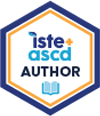
Event Information

Content:
The importance of centering before transitions
Primacy/Recency Theory
Mirror Neurons and Nero-Cardiac Coupling
Time: 5 minutes
Process: Check In: 1 Word
Heart Coherence Technique for Educators and Students
Content: Words Create Worlds: The importance of the words we use with students and ourselves- inner critic awareness
Time 5 Minutes
Process: No complaining challenge for the day
No Bad Days personal narrative
But Life is Good Activity
Coaching colleagues on the Power of Our Words
Content:Recognize the signs of stress and respond more effectively by experimenting with a multitude of ways to rethink, reduce, relax, and release stress using mindful practices.
Time: 10 Minutes
Process: List stressors and typical ways deal with stress (Work-Stress Self-Assessment)
Pop Ups
Content: Identify the ways mindfulness and SEL can strengthen inner resilience, which in turn can help create more peaceful and equitable schools.
Time: 15 Minutes
Process:Routines and Rituals
What are your Big Rocks? (Pair, Share, Square)Personal Sustainability Practices: Mindfulness of Breaths Practice and Reflection: 7/11 breath, 4 Focused Breaths, Present Moment Pauses, Better Days Practices and Connections
Content: Recognize the power of thoughts and find ways of skillfully, mindfully, recognizing our thought patterns.
Neuroplasticity and Epigentics: Two Words every student and educator should know!
Time: 15 Minutes
Process: How to respond rather than react.
Noticing the negativity bias. Pay Attention to the Good: Five thoughts of gratitude (Find someone who knows exercise)
Content: How to integrate restorative practices into the school setting.
Intentional Closure
Time:10 Minutes
Process: Written reflection on what strategies you could “rent”, which you are “sold on”, and how you can practically integrate these into your day.
Check Out: 1 Word
Loving Kindness Meditation
Behr, G., & Rydzewski, R. (2023). When you wonder, you’re learning: Mister Rogers’ enduring lessons for raising creative, curious, caring kids. Hachette Go.
Boyd, D. T., Gale, A., Quinn, C. R., Mueller-Williams, A. C., Jones, K. V., Williams, E., & Lateef, H. A. (2023). Do we belong? Examining the associations between adolescents’ perceptions of school belonging, teacher discrimination, peer prejudice and suicide. Journal of Racial and Ethnic Health Disparities, 11(3), 1454–1464.
Cai, Y., Yang, Y., Ge, Q., & Weng, H. (2023, September). The interplay between teacher empathy, students’ sense of school belonging, and learning achievement. European Journal of Psychology of Education, 38(3), 1167–1183.
Cameron, J. (2021). The listening path: The creative art of attention. St. Martin’s Essentials.
Centers for Disease Control and Prevention. (2022). Data and Statistics on Children’s Mental Health. Centers for Disease Control and Prevention. https://www.cdc.gov/childrensmentalhealth/data.html
Davidson, R. J. (2012). The emotional life of your brain: How its unique patterns affect the way you think, feel, and live--and how you can change them. Penguin.
Dhiman, S. (2007). Personal mastery: Our quest for self-actualization, meaning, and highest purpose. Interbeing, 1(1), 25–35.
Docter, P., & Del Carmen, R. (Directors). (2015). Inside out [Film]. Walt Disney Studios Motion Pictures.
Duhigg, C. (2012). The power of habit: Why we do what we do in life and business. Random
Ferrari, P. F., & Coudé, G. (2018). Mirror neurons, embodied emotions, and empathy. In K. Z. Meyza & E. Knapska (Eds.), Neuronal correlates of empathy: From rodent to human (pp. 67-77). Elsevier Academic Press.
Fredrickson, B. L., Cohn, M. A., Coffey, K. A., Pek, J., & Finkel, S. M. (2008). Open hearts build lives: positive emotions, induced through loving-kindness meditation, build consequential personal resources. Journal of personality and social psychology, 95(5), 1045.
Fred Rogers Institute. (2022). Talking with children about difficult things in the news. https://www.fredrogersinstitute.org/files/resources/7/respondingtodifficultcurrentevents2022.pdf
Gillians, P. E., & Cooper, B. S. (2022). Keeping school children safe and alive: Strategies to stop bullying and prevent suicide. IAP.
Hallowell, E. M. (2015). Driven to distraction at work: How to focus and be more productive. Harvard Business Review Press.
Kabat-Zinn, J. (2018). A study in happiness—meditation, the brain, and the immune system. Mindfulness, 9(5), Springer.
Katie, B. (2003) Loving what is: Four questions that can change your life. Three Rivers Press.
Kiken, L. G., & Shook, N. J. (2011). Looking up: Mindfulness increases positive judgments and reduces negativity bias. Social Psychological and Personality Science, 2(4), 425-431.
Lama, D., Tutu, D., & Abrams, D. (2016). The book of joy: Lasting happiness in a changing world. Penguin Random House.
Lucas, L. (2017). Practicing presence: Simple self-care strategies for teachers. Routledge.
Luks, A., & Payne, P. (2001). The healing power of doing good: The health and spiritual benefits of helping others. iUniverse.
Mate’, G. (2011) When the body says no: The cost of hidden stress Hoboken, N.J. : J. Wiley.
Mead M. N. (2008). Benefits of sunlight: a bright spot for human health. Environmental Health
Perspectives, 116(4), A160–A167. https://doi.org/10.1289/ehp.116-a160
Mirgain, S. (2020). The surprising benefit of going through difficult times. UW School of Medicine and Public Health. Retrieved July 26, 2024 from https://www.uwhealth.org/news/surprising-benefit-going-through-difficult-times
Mindful.org. (n.d.). Loving-kindness meditation with Sharon Salzberg. Mindful.org.
https://www.mindful.org/loving-kindness-meditation-with-sharon-salzberg/
Neff, K. D. (2012). The science of self-compassion. In C. Germer & R. Siegel (Eds.), Compassion and Wisdom in Psychotherapy (pp. 79-92). New York: Guildford Press.
Neufeld, G., & Maté, G. (2006). Hold on to your kids: Why parents need to matter more than peers. Ballantine Books.
Penagos-Corzo, J. C., Cosio van-Hasselt, M., Escobar, D., Vázquez-Roque, R. A., & Flores, G. (2022). Mirror neurons and empathy-related regions in psychopathy: Systematic review, meta-analysis, and a working model. Social Neuroscience, 17(5), 462–479.
Pettinelli, M. (2019). My Final Analysis of Everything-including Emotions, Feelings and Thoughts-By Mark Rozen Pettinelli.
URL: http://cnx.org/content/col30326/1.8
Responsive Classroom. (2019, September 3). Setting goals, hopes, and dreams: Connecting students to the community. https://www.responsiveclassroom.org/setting-goals-hopes-and-dreams/
Rizzolatti, G., & Fabbri-Destro, M. (2010). Mirror neurons: From discovery to autism. Experimental Brain Research, 200(3–4), 223–237.
Robbins, M. (2018). How to bring your whole self to work. Greater Good Science Center.
Robbins, M. (Host) (2022, December 12). 3 Things You Need to Accept About Other People.
Audio Podcast Episode 21. In The Mel Robbins Podcast.
https://www.melrobbins.com/podcasts/episode-21
Rowe, M. B. (1986). Wait time: Slowing down may be a way of speeding up! Journal of Teacher Education, 37(1), 43-50. https://doi.org/10.1177/002248718603700110
Sandstrom G., & Dunn E. (2014). Social interactions and well-being: The surprising power of weak ties. Personality and Social Psychology Bulletin. 40(7), 910-922. https://doi.org/10.1177/0146167214529799
Siegel, D. J., & Bryson, T. P. (2012). The whole-brain child. Constable & Robinson.
Stephen, F. A., Ermalyn, L. P., Mangorsi, B. Y., Louise, L. J., & Juvenmile, T. B. (2022). A Voyage into the Visualization of Athletic Performances: A Review. American Journal of Multidisciplinary Research and Innovation, 1(3), 105-109.
University of Colorado at Boulder. (2018, December 10). Your brain on imagination: It's a lot like reality, study shows. ScienceDaily. Retrieved July 29, 2024 from www.sciencedaily.com/releases/2018/12/181210144943.htm
Wilde, D. (2013). Train Your Brain. Balboa Press.
Wong, L. P., Alias, H., Md Fuzi, A. A., Omar, I. S., Mohamad Nor, A., & Tan, M. P., et al. (2021). Escalating progression of mental health disorders during the COVID-19 pandemic: Evidence from a nationwide survey. PloS one, 16(3), e0248916.
Zander, R. S., & Zander, B. (2002). The art of possibility: Transforming professional and personal life. Penguin.


